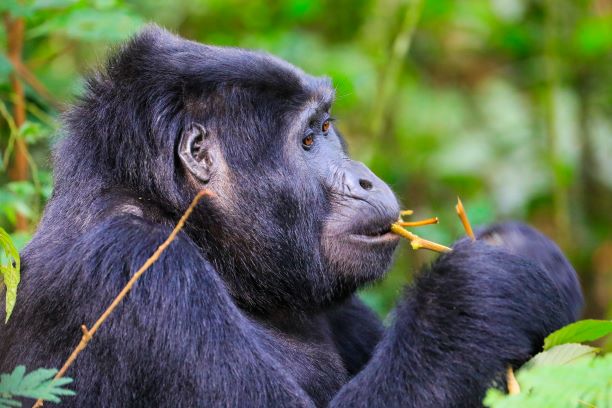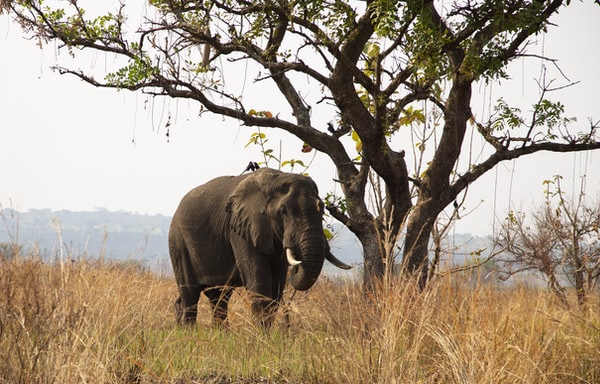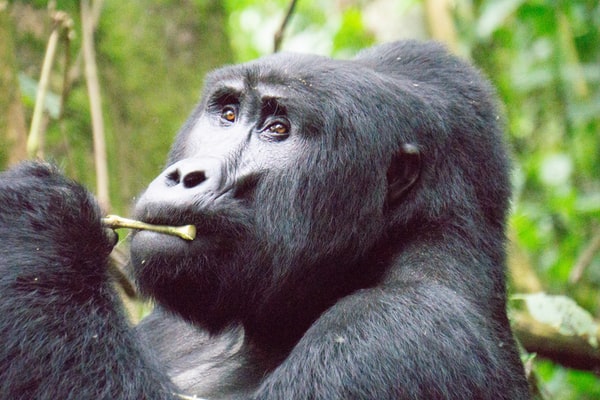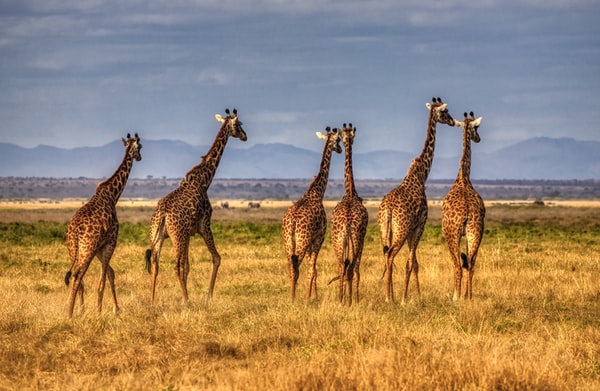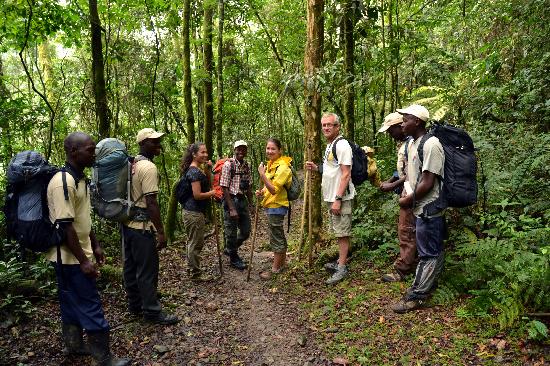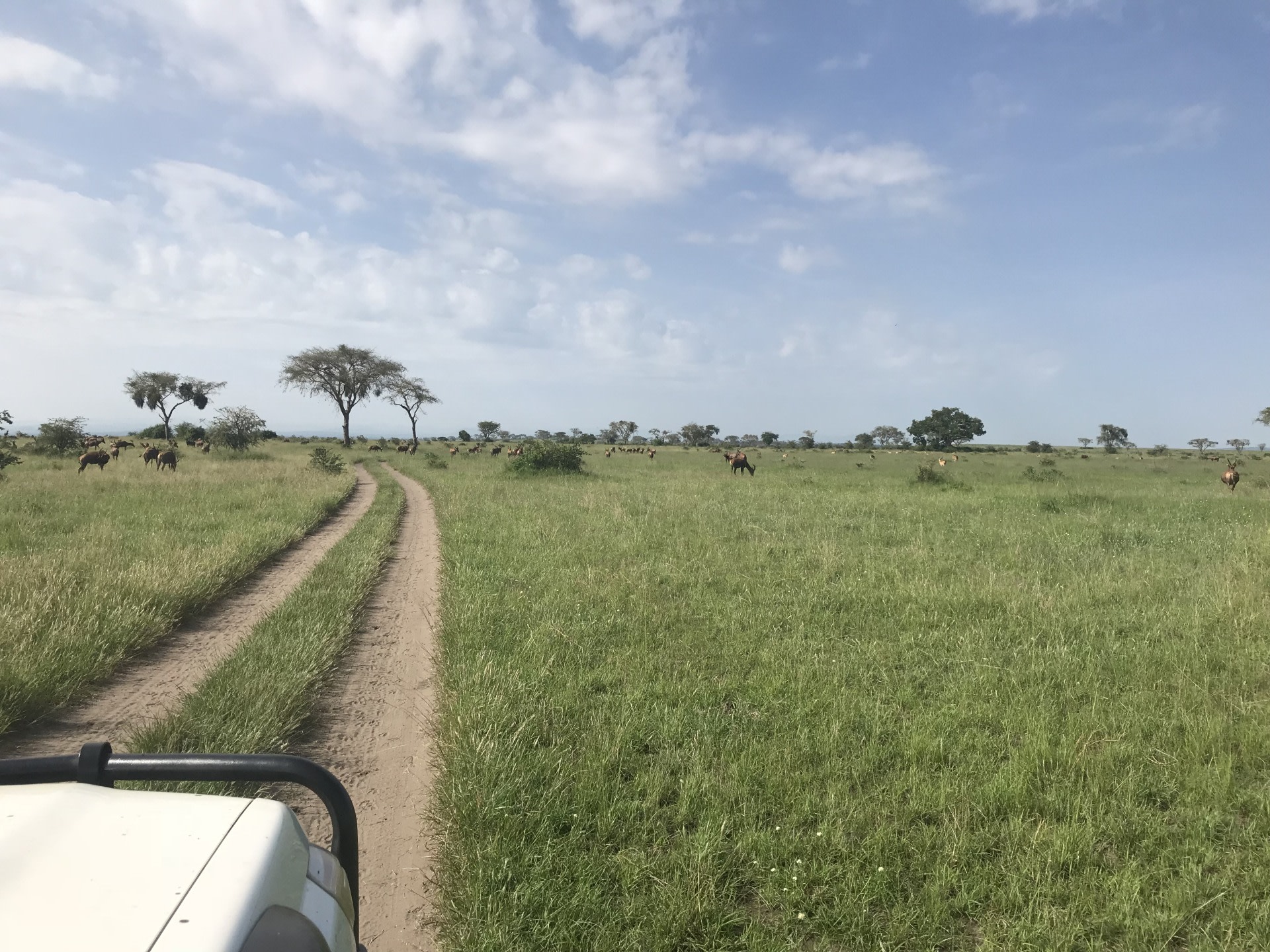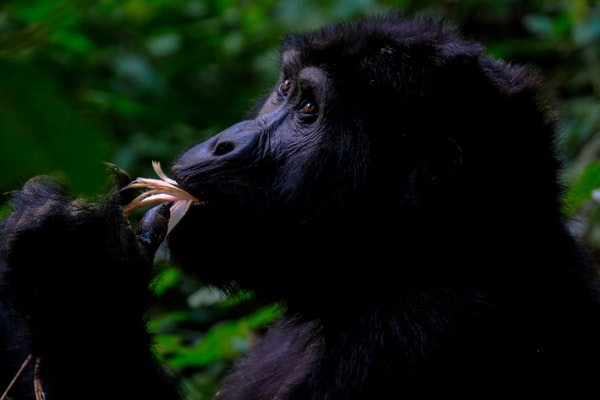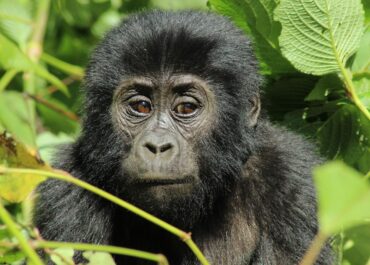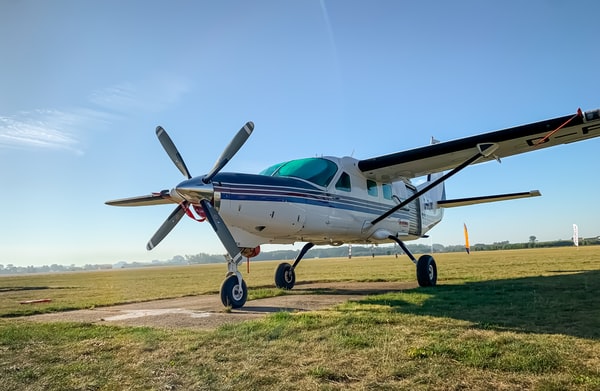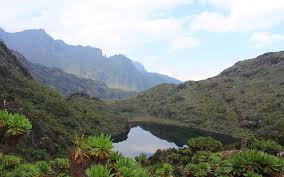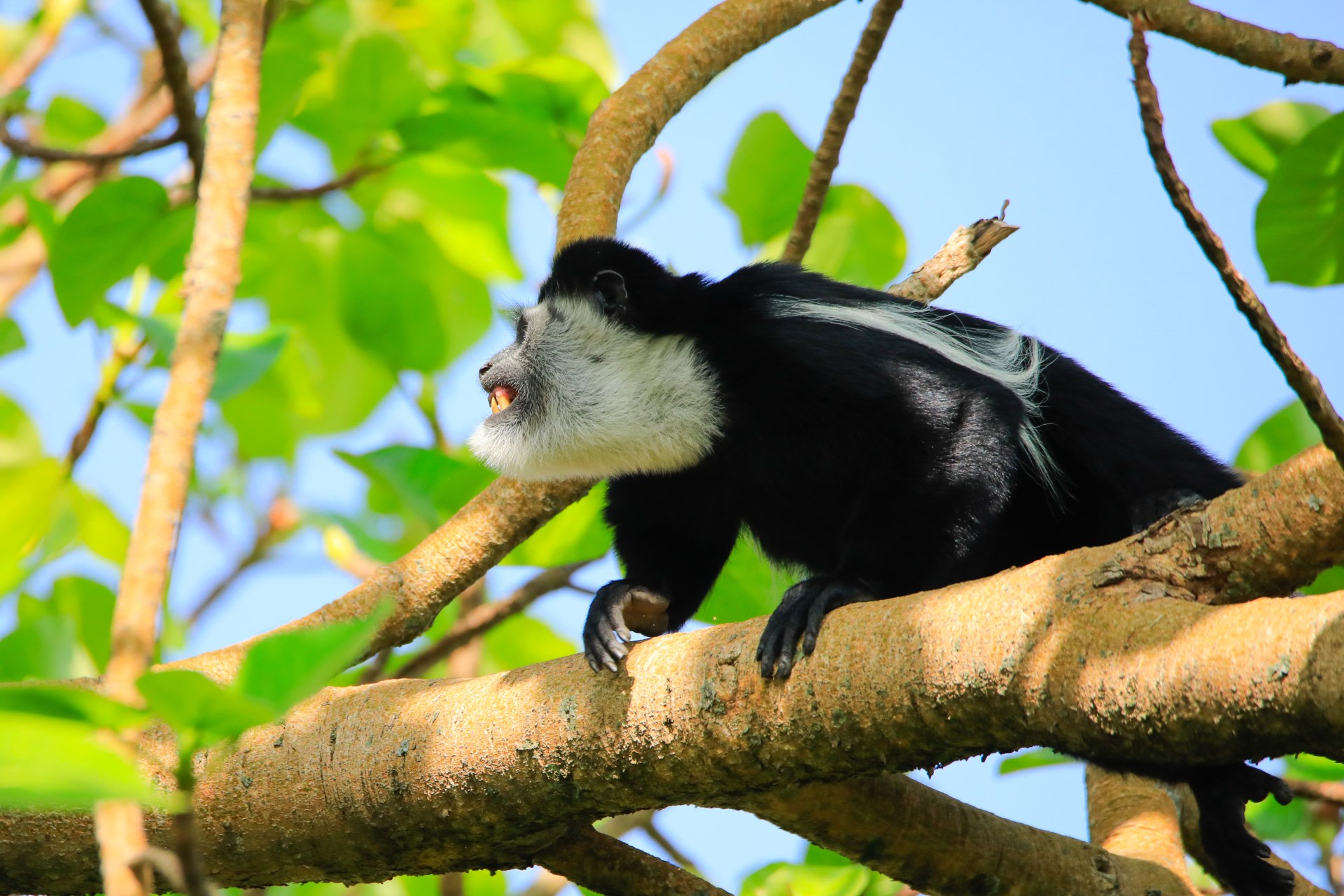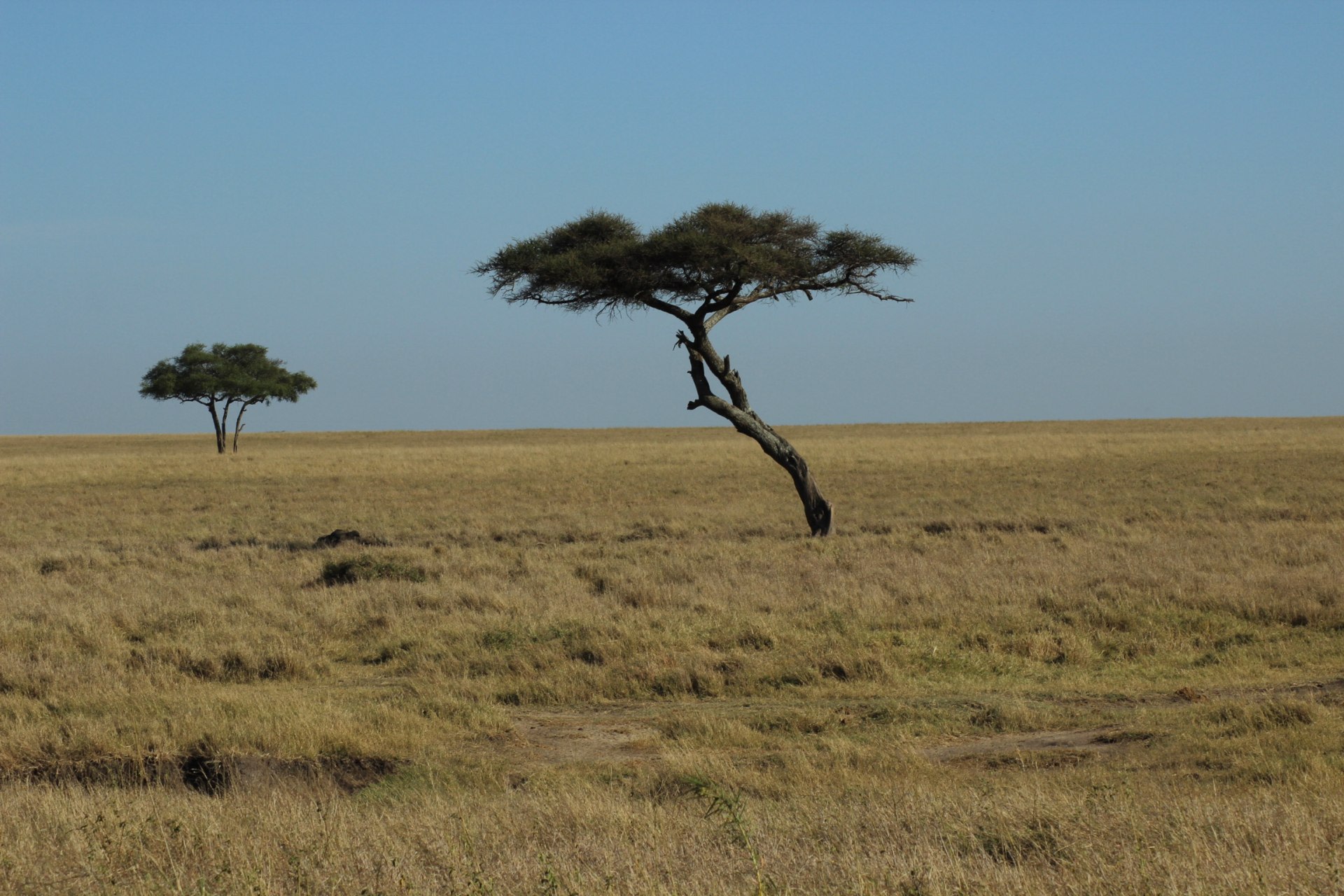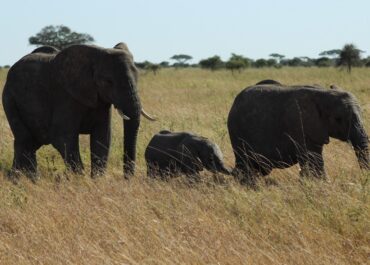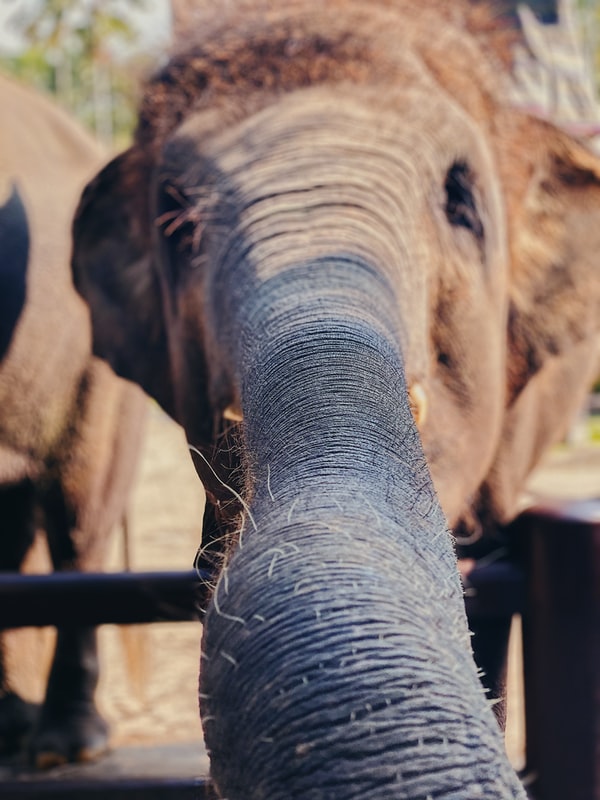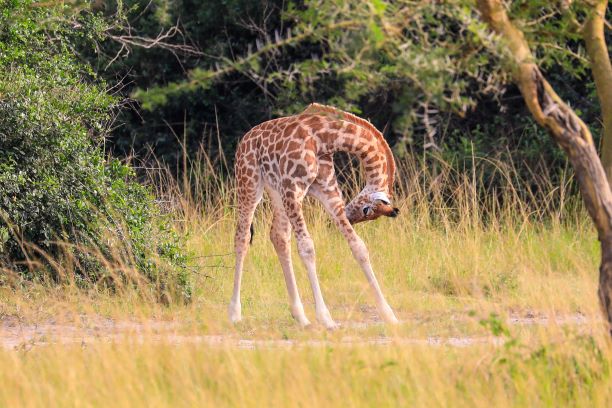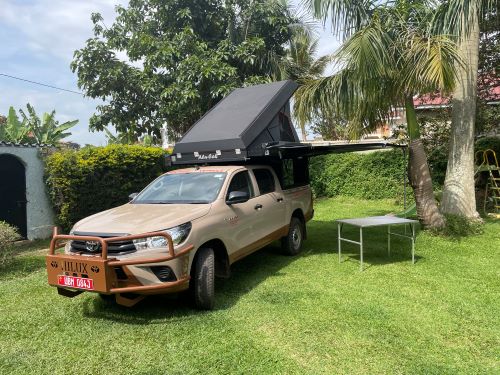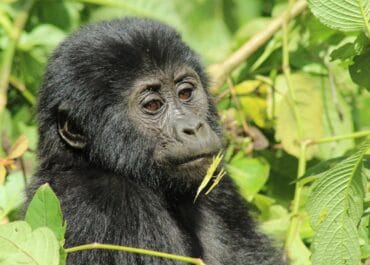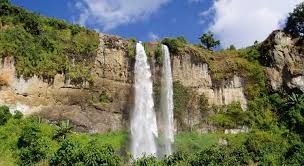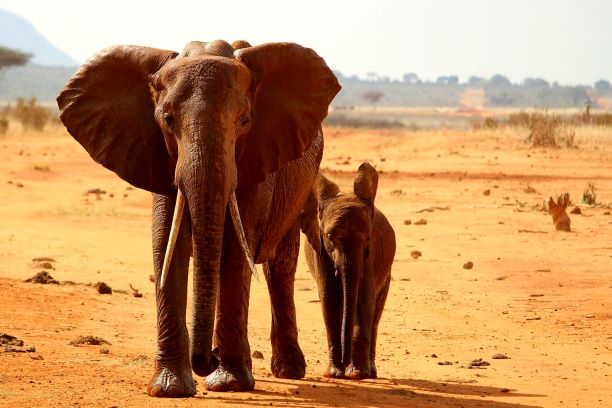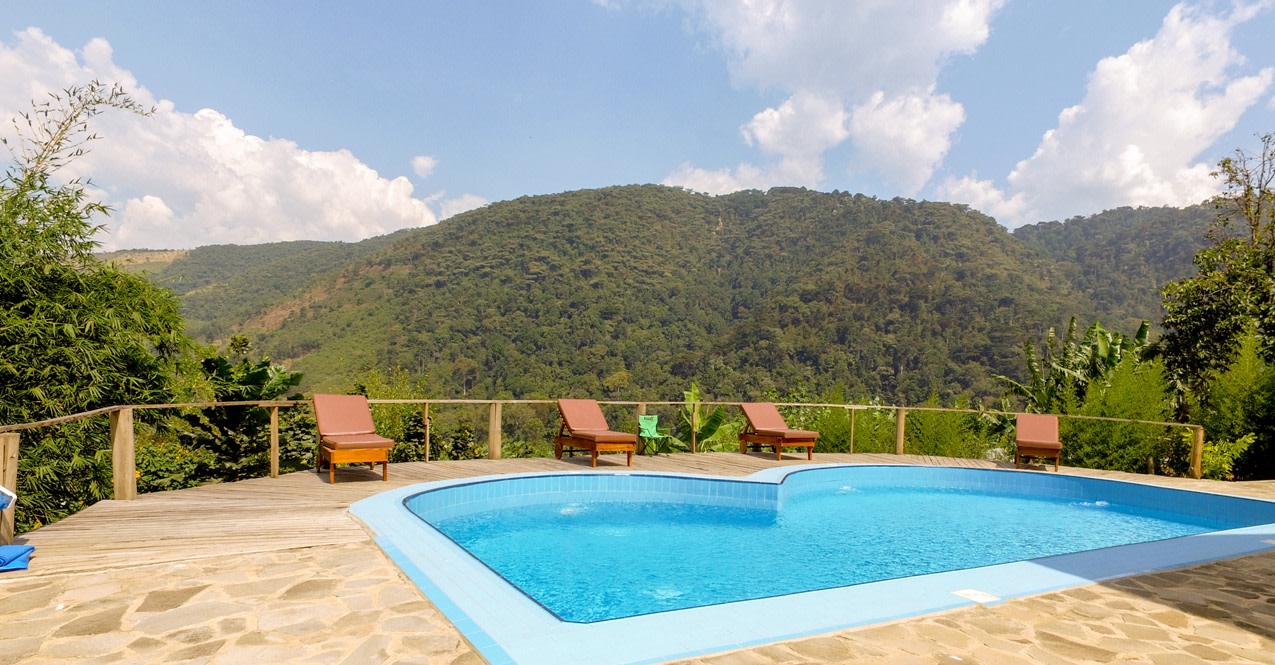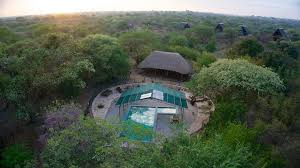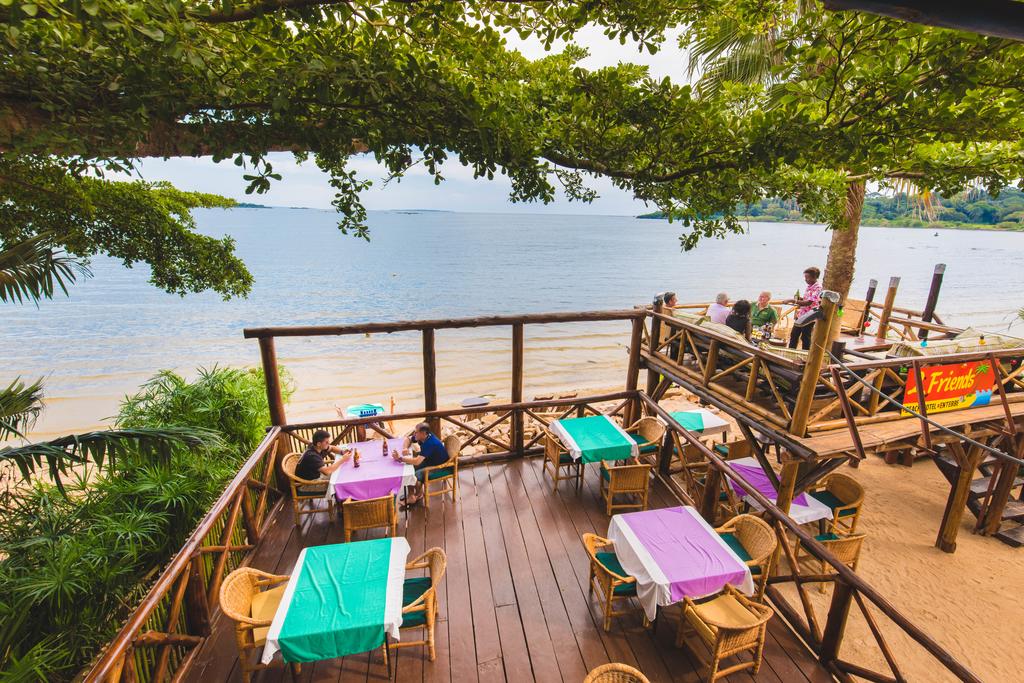Up close and personal with the gorillas
Immerse yourself in the evergreen country on the East African plateau on a trip to Uganda. With its pleasant climate, it lies at an average altitude of 1100 meters. The often untouched nature provides a habitat for highly endangered animal species such as gorillas, chimpanzees and Rothschild giraffes.
In the southwest of Uganda, in the Bwindi Impenetrable National Park, there are around 460 of the world’s 1,100 remaining Mountain gorillas. There are also a large number of reserves such as Queen Elisabeth National Park, Murchison Falls National Park with its famous waterfall, the virtually untouched Kidepo National Park and Lake Mburo National Park where you can experience the “big five” up close.
You can plan your vacation in Uganda with Avali Tours individually or in a small group. We are also specialists in Uganda self-drive tours. If you want to travel independently and privately, you can explore Uganda on your own with your own four-wheel drive rental car – of course with pre-booked lodges and pre-booked permits for gorilla and chimpanzee tracking.
Travel offers Uganda
-
 ab € 2.890 / Person
ab € 2.890 / PersonUganda Compact
9 Tage 2-6 Uganda Travel -
 ab € 4.645 / Person
ab € 4.645 / PersonUganda Classic
13 Tage 2-6 Uganda Travel -
 ab € 3.990 / Person
ab € 3.990 / PersonUganda round trip – 13 days
13 Tage 1-6 Uganda Travel -
 ab € 7.055 / Person
ab € 7.055 / PersonUganda Comfort – 16 days
16 Tage 2-6 Uganda Travel -
 ab € 5.186 / Person
ab € 5.186 / PersonUganda Highlights Drive and Walk
15 Tage 1-6 Uganda Travel -
 ab € 2.450 / Person
ab € 2.450 / PersonGroup tour 9 days Uganda Compact
9 Tage 4-8 Uganda Travel -
 ab € 4.395 / Person
ab € 4.395 / PersonUganda self-drive tour – 21 days
20 Tage 1-4 Uganda Travel -
 ab € 2.715 / Person
ab € 2.715 / Person2 weeks self-drive trip Uganda
14 Tage 1-4 Uganda Travel -
 ab € 3.780 / Person
ab € 3.780 / PersonGroup tour 13 days Uganda Classic
13 Tage 2-6 Uganda Travel -
 ab € 4.290 / Person
ab € 4.290 / PersonGroup tour 11 days Uganda Highlights
11 Tage 2-6 Uganda Travel -
 ab € 5.110 / Person
ab € 5.110 / PersonFly-in safari Uganda – 9 days
9 Tage 1-6 Uganda Travel -
 ab € 1.950 / Person
ab € 1.950 / PersonRwenzori Trekking – 8 days
8 Tage 1-6 Uganda Travel -
 ab € 5.390 / Person
ab € 5.390 / PersonWestern Uganda a la Carte – 15 days
15 Tage 1-6 Uganda Travel -
 ab € 3.490 / Person
ab € 3.490 / PersonFascination Uganda – 9 days
9 Tage 1-6 Uganda Travel -
 ab € 1.990 / Person
ab € 1.990 / PersonUganda Highlights – 8 days
8 Tage 1-5 Uganda Travel -
 ab € 7.150 / Person
ab € 7.150 / PersonLuxury safari through Uganda – 18 days
18 Tage 1-6 Uganda Travel -
 ab € 5.850 / Person
ab € 5.850 / PersonThe great Uganda trip
19 Tage 1-6 Uganda Travel -
 ab € 1.395 / Person
ab € 1.395 / PersonGorilla Intensive 3 days
3 Tage 1-6 Uganda Travel -
 ab € 2.750 / Person
ab € 2.750 / Person21 days camping trip with roof tent
21 Tage 1-2 Uganda Travel -
 ab € 155 / Day & Vehicle
ab € 155 / Day & VehicleUganda in a canopy camper
1 Tag 1-2 Uganda Travel
Why travel with Avali Tours?
- We know accommodation, lodges, hotels and camps from our own experience
- You are traveling with German or English speaking drivers
- We offer you professional advice
- We can customize any trip to your wishes
- You will be traveling with mostly German-speaking guides and drivers
- Vehicle fleet maintained according to German rules
Experience the fascinating wildlife, national parks and primates on Uganda safaris
Whether you want to see elephants, lions, leopards, giraffes, zebras, hippos, crocodiles or antelopes – the safari dream becomes reality in Uganda. Countless lakes and rivers such as Lake Victoria, Lake Bunyonyi or the White Nile are scenically impressive and offer opportunities for sporting activities and relaxation in the midst of pristine nature.
Uganda Country combination Kenya, Tanzania & Rwanda
The countries of East Africa areideal for a combination of countries. Whenever we hear the question: “Uganda or Tanzania?” – we ask back: “Why not both?”.
Simply combine the most beautiful highlights of East Africa on one trip. In Uganda, encounter the majestic gorillas and lively chimpanzees in their natural habitat of Bwindi Impenetrable National Park, marvel at the roaring Murchison Falls and observe the unique wildlife of Queen Elizabeth National Park, which is home to the Big Five, among others.
Wildness and wonder: an unforgettable journey through the heart of East Africa
-
 ab € 2.890 / Person
ab € 2.890 / PersonTaste of Rwanda & Uganda – 10 days
10 Tage 1-6 Rwanda Travel -
 ab € 1.580 / Person
ab € 1.580 / PersonMount Elgon – Sasa Trail – 6 days
6 Tage 1-6 Uganda Reisen
In Tanzania, the incomparable sight of Mount Kilimanjaro, the Ngorongoro Crater and the vastness of the Serengeti awaits you. In September and October you can also see the Great Migration in Tanzania, the spectacular animal migration in which millions of wildebeest and zebras cross the Mara River.
Kenya attracts visitors with relaxation on the white sandy beaches of Mombasa and the diverse culture of the Maasai and wildlife spotting in the national parks. The species-rich Amboseli National Park is known for its elephant population and at Lake Nakuru you can be enchanted by the bright pink flamingos.
Rwanda is the least developed tourist destination in our country mosaic. The landlocked country is an oasis of peace and beauty – you will experience this at the latest when you see the rolling landscape in the “Land of a Thousand Hills” for the first time.
In the capital Kigali, you can stroll through the lively and colorful markets and learn about the tragic chapters of the country’s history at the Genocide Memorial. The real highlight of Rwanda are the majestic mountain gorillas in the Volcanoes National Park. An encounter with these gentle giants in the mist is an experience you will never forget
With a combination of Uganda, Tanzania, Kenya and Rwanda, you will experience the authentic Africa, filled with wonders, wilderness and unforgettable experiences. Each of these countries offers numerous impressive moments that together tell the fascinating story of this breathtaking continent. Do you already have a clear idea of the highlights you would like to discover?
Do you already have specific ideas about which highlights you would like to explore? We will be happy to organize a tailor-made trip for you.
What is the best way to discover Uganda?
Selbstfahrer mit vorgebuchten Lodges
If you prefer the freedom and independence that comes with driving your own vehicle, then a self-drive tour with pre-booked lodges and permits for the national parks is perfect for you. You can set your own schedule, stop when and where you want and discover the beauty of Uganda at your own pace. With the pre-booked lodges, you can look forward to having a comfortable place to rest at the end of an eventful day. With our detailed travel plan and route description, you can easily devote yourself to your very own travel experiences along the route.
If you are completely adventurous and want to plan your own route with overnight accommodation, then you have the option of booking just a rental car with us.
Rundreise in Kleingruppen
If you appreciate the benefits of a guided tour while enjoying the intimate experience of a small group, a small group tour is an excellent choice. This type of trip allows you to discover the highlights of Uganda in the company of an experienced local guide and a small group of like-minded people. Look forward to being out and about together, on game drives and walking safaris, listening to the anecdotes of our tour guide – with information and stories that you certainly won’t find in any travel guide.
Privatreise mit Fahrer
If you are looking for maximum comfort and convenience, then a private tour with a guide is the ideal choice. On this type of trip, you will be accompanied by a friendly driver who will take care of all the logistical aspects of your trip and knows his way around. You can sit back, relax and enjoy the view while your driver drives you safely through the countryside and national parks. Also included: valuable insights into the culture, history and wildlife of the country.
Campingreise mit Dachzelt
If you are one of those who want to experience the wilderness up close, a camping trip with a roof tent is just the thing for you. Not only will you have the opportunity to see the country’s breathtaking wildlife up close, but you will also have the chance to sleep under the African starry sky in the midst of nature. In addition, the roof tent offers a high degree of flexibility, as you can choose your location as you wish and always have your bed, kitchen and other equipment with you.
Private Flugsafari
A fly-in safari is not only a quick and convenient way to visit Uganda’s various national parks and attractions, it also offers unparalleled views of the country’s diverse topography, ranging from the snow-capped mountains of Rwenzori to the vast plains of the savannah. A fly-in safari also allows you to visit a large number of places in a short space of time, saving you a lot of distance.
Where to stay – our Uganda Lodges
Highlights in Uganda
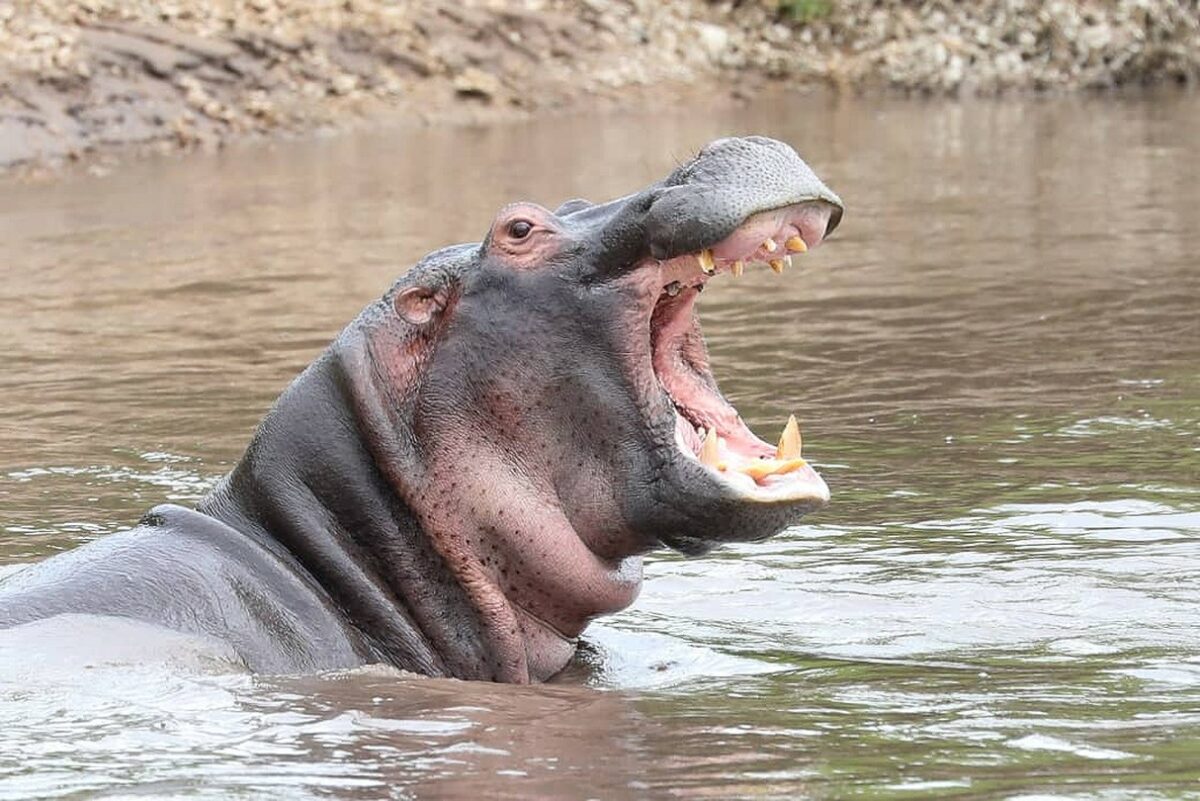
Murchinson Falls National Park
The national park in north-western Uganda is named after the waterfalls of the same name, where the White Nile plunges more than 40 meters into the depths. In addition to crocodiles, elephants, lions, hippos and buffalo, you can also observe the highly endangered Rothschild giraffe here. In the northwest of the national park, the densely overgrown mahogany forests are home to many chimpanzees. And it’s not just ornithologists who enjoy the many different bird species, which put on a masterful concert, especially at sunrise. You have the option of going on a boat safari or a classic game drive in an off-road vehicle (both with a guide). There are also some freely accessible trails where you can explore the park on your own. However, if you want to use the time to see as many large animals as possible, we recommend one of the expert guides at your side – interesting anecdotes and interesting facts about the animals’ habitat included!
Bwindi Impenetrable National Park
Bwindi National Park is home to one of the country’s most valuable treasures. Here you can observe the mountain gorillas in their natural habitat. This is only possible in the form of gorilla tracking with a guide, who takes you on a short hike directly to the gorilla families. Depending on your fitness level, you can join different groups if, for example, you want to take it a little easier. You will be rewarded with a special kind of encounter. It is a real moment of pause when you see the gentle giants in the middle of the green thicket for the first time. Many may consider the gorilla permit to be an expensive affair, but many know that they are making a very meaningful contribution to the protection of the animals and enabling sustainable and environmentally friendly tourism.
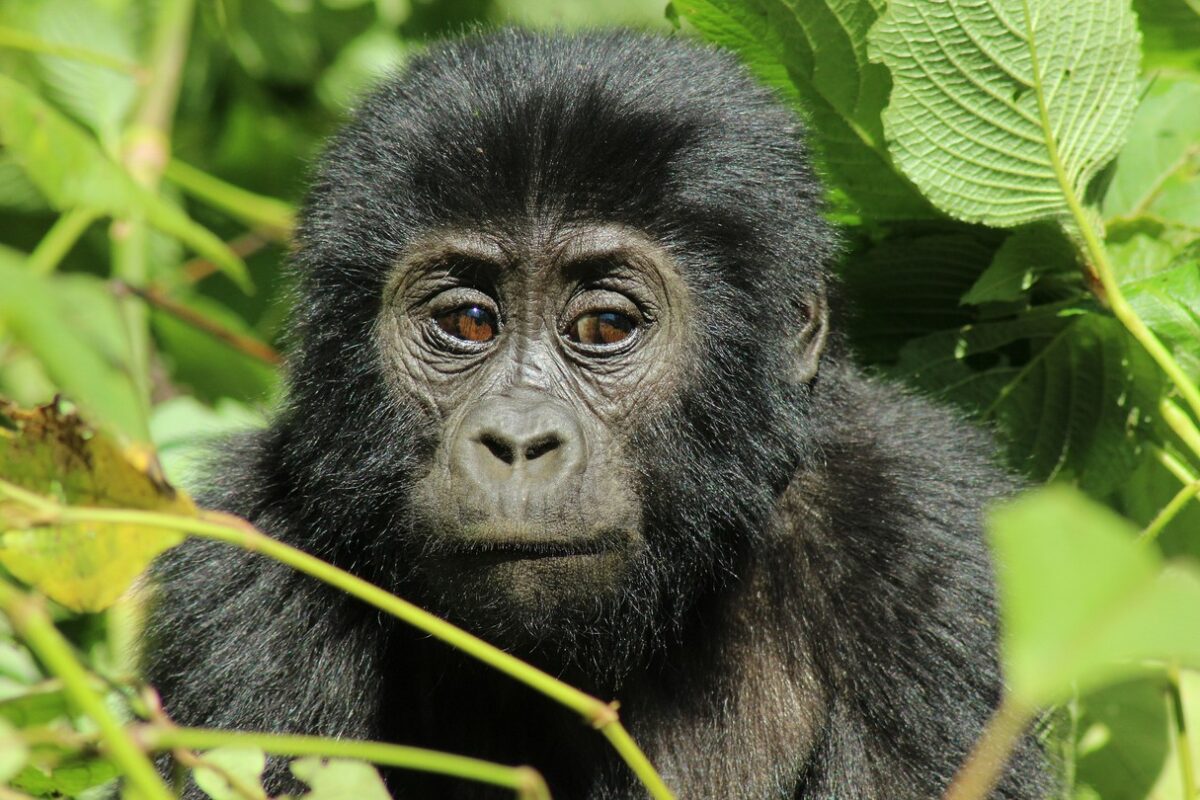

Walking safari in Lake Mburo National Park
A safari on foot is a very special experience and not possible in many national parks. Due to the special wildlife population, however, you can easily go on a magical journey of discovery on foot in Lake Mburo – because no large predators live here. Walk with your guide through the savannah landscape, past acacia and papyrus forests. Look forward to safari moments of a special kind: here you can observe hippos, buffaloes, impalas, eland antelopes, warthogs and crocodiles in their natural habitat – in addition to fish eagles and pelicans, there are around 300 other bird species. If you want to see zebras in Uganda, you can only do so in this national park. The hyenas, jackals and leopards living in the park are very reclusive.
More highlights
Watching mountain orillas in Bwindi Impenetrable National Park
Big 5 in Queen Elizabeth National Park
Chimpanzee tracking in the Kibale Forest
Kazinga Canal boat tour
The waterfalls in Rwenzori National Park
Walking safari in Lake Mburo National Park
Game drive in Kidepo National Park (Big Five sighting possible)
Lake Victoria
Crossing the equator
Lake Bunyonyi
Boat safari on the White Nile
Interesting facts & frequently asked questions
Wann ist die beste Reisezeit für Uganda?
The best time to travel to Uganda depends on individual preferences and planned activities. In general, however, the dry seasons between December and February and from June to September are the best times to travel. During these months, the roads are well passable and the game drives on safari are particularly rewarding as the animals congregate around the remaining waterholes and the less dense vegetation allows for better visibility. In addition, the average temperatures of 22-25°C are pleasantly warm, but not too hot. Although the landscape is particularly lush and flourishing in the rainy seasons from March to May and October to November, the heavy rains can affect travel plans. The dry seasons are therefore considered the best time to travel to Uganda.
Klimatabelle und Wetter
The climate is determined by its location on the equator and the altitude of the country. The relatively moderate temperature conditions are fairly constant throughout the year. There are two rainy seasons, a stronger one between March and May, and another from October to November. During these months, heavy rainfall is heaviest in the mountainous regions of the west and southwest and around Lake Victoria. The average temperatures in the capital are a balanced 22-25°C throughout the year.
| January | february | March | April | May | June | July | august | September | october | november | December | |
| Average daily temperature in °C | 22,2 | 22,8 | 22,6 | 22,2 | 21,7 | 21,5 | 21,3 | 21,7 | 22,0 | 22,1 | 22,0 | 22,2 |
| Precipitation per month in mm | 86,7 | 84,4 | 184,5 | 264,4 | 253,8 | 116,2 | 72,1 | 77,8 | 79,0 | 127,6 | 171,7 | 120,6 |
Einreise
To enter Uganda, you need a passport (which is valid for 6 months after departure), proof of a yellow fever vaccination and a visa, which you must apply for online in advance .
Geld & Währung
The official currency in Uganda is the Uganda Shilling. Euros and US dollars can also be exchanged locally. In most cases, it is also possible to pay with US dollars. You can withdraw cash from ATMs in larger cities and at the airport using your EC card and credit card. Payment by credit card is not common and is usually only possible in large hotels and restaurants.
Wie viel Trinkgeld ist in Uganda üblich?
Tipping is a common practice in Uganda and an important part of the income for many service providers. Drivers, guides and rangers are happy to receive a tip of USD 5 per person per day. For porters who help you with tracking, a tip of 5-10 USD is appropriate. Remember that tips are always voluntary and are primarily intended to express your appreciation for good service. It is customary to hand over the tip in an envelope in order to maintain discretion.
Gesund reisen
All travelers must provide proof of a yellow fever vaccination – the only exception is children who have not yet reached the age of one. In addition to a hepatitis A vaccination, the Federal Foreign Office also recommends adhering to the vaccination recommendations of the Robert Koch Institute and dealing with the issue of malaria prophylaxis. If you have any questions, it is best to consult your family doctor or a travel medicine specialist.
Welche Kleidung sollte ich einpacken | Packliste für Uganda
- Light, breathable clothing: T-shirts, blouses and pants made of cotton are ideal.
- Long pants and shirts: these not only protect you from mosquito bites, but also from the sun.
- Light-colored clothing: Dark colors can attract insects, so light colors are preferable.
- Light jacket or sweater: For cooler evenings or excursions to higher altitudes.
- Robust clothing: If you are planning a safari, you should pack robust clothing.
- Hat or cap: A hat protects you from the sun and helps prevent sunstroke.
- Comfortable hiking boots: These are essential for longer walks or hikes.
- Sun protection: Sunglasses and sun cream with a high protection factor are important.
- Rain jacket: As the weather in Uganda can change quickly, you should always have a rain jacket with you.
- Swimwear: For a dip in the pool at the lodge or if you plan to swim in Lake Victoria.
- Underwear and socks: Sufficient to change, ideally also made of cotton
Ortszeit
During summer time, you have to set your watch one hour ahead on a trip to Uganda (Central European Summer Time +1). In winter time, Uganda is 2 hours ahead of us (CET +2 hours).
Sprache
In addition to English, Swahili is also an official language, although the latter is rarely used. The locals speak a total of 50 different national languages – of which Luganda is the most widely spoken.
Essen und Trinken
Ugali (maize porridge), sweet potatoes, manioc, beans and cabbage are popular side dishes in Uganda, which are usually eaten with fish or chicken – all spiced up to make a typical meal in Uganda. You can especially look forward to the fresh fruit, which is also ideal for snacks: Avocados, papayas and oranges with a wonderful aroma. For a snack between meals, try the sweet mandazis (small dumplings) or samosas – a savory version of dumplings. Tea is grown in Uganda and is mainly drunk with milk. When drinking water, you should always use bottled water. The water from the tap is not suitable for consumption.


